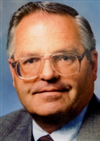This exclusive Pack contains 5 courses:
1. IEC 62304 for Medical Device Software
2. Drafting a Software V&V Documentation Package and Protocol
3. Validation of Non-Product Software
4. IEC 62304 and Demystifying Software Validation using the Principles of LDLC
5. Medical Device Cybersecurity and FDA Compliance
Total Duration: 10 Hours
Medical device software can make or break a device. Badly developed, non-compliant software can compromise a device's safety and reliability. The goal is that upon completion of this pack of courses, you should understand how to create and maintain safe software for medical devices throughout their life cycles. In addition to this, you should also understand how IEC 62304 interlinks with other standards such as ISO 14971 and ISO 13485.
The courses include IEC 62304 requirements and explains risk-based approach for Verification and Validation using protocols and GAMP. What if your software is not a product; how would you validation it? Well, this pack has answers to that.
Next, it takes you through a process of software validation giving you a complete overview of the imminent changes and their implications, using an innovative approach yet is based upon solid principles and proven practices. And finally, and importantly, the cyber-attacks threaten medical devices and how the industry is currently responding to them. You will learn the many ways of preventing and mitigating the cybersecurity risk, and about the industry’s best practices that can help your company do the same.
Agenda
TOPIC 1: IEC 62304 for Medical Device SoftwareSpeaker: Nancy Knettell
Duration: 60 Minutes
- Why is having an IEC62304 Compliant Software Quality System important to both developing your software for 510K approval and how you can be putting your company at risk post-approval if you do not have a compliant system in place.
- What is IEC62304 and how does it differ from other Compliance Standards such as ISO13485
- What are the elements that constitute an IEC62304 Compliant System?
- Benefits of developing to an IEC62304 standard
- What are the components of the Software Lifecycle
- What are the major Software Work Products developed to the standard?
- How it fits in with a Company’s Standard Quality Process
- One of the most common reasons that a Software Enabled Medical Device is denied a 510K is because the Guidance has not been followed
- What are the potential audit consequences if the Company does not have an IEC62304 Compliance Quality System in place
- Understand the regulatory need for IEC 62304 Guidance as it relates to submitting a 510K for Software Enabled Medical Devices
- What constitutes compliance with the Standard
- What areas does the Guidance Address
- What are the legal consequences for the company with the submittal if the company does not adhere to the Guidance
TOPIC 2: Drafting a Software V&V Documentation Package and Protocol
Speaker: John E. Lincoln
Duration: 90 Minutes
- Verification or Validation
- Current Regulatory Expectations and “Hot Buttons”
- The Project Validation Plan
- Product and Process / Equipment Software V&V
- When and How to Use DQ, IQ, OQ, PQ
- GAMP Considerations
- The FDA’s 11 Key Elements
- White Box and “Black Box” Validations
TOPIC 3: Validation of Non-Product Software
Speaker: Thomas Bento
Duration: 60 Minutes
- Software used as part of the manufacturing process (including software embedded in machine tools, statistical process control software, programmable logic controllers [PLCs], and software in automated inspection or test systems).
- Software used in process validation (such as statistical calculation software, spreadsheets, etc.).
- Software used in design and development processes (such as CAD software, CAM software, software development tools, software test tools, compilers, editors, code generators, etc.).
- Software used to automate part of the quality process (such as complaint-handling systems, lot-tracking systems, training-database systems, etc.).
- Software used to create, transmit, modify, or store electronic records that are required by regulation.
- Software used to implement electronic signatures for documents required by regulation.
TOPIC 4: IEC 62304 and Demystifying Software Validation using the Principles of LDLC
Speaker: José Mora
Duration: 180 Minutes
Lecture 1:
- Why is having an IEC62304 Compliant Software Quality System important to both developing your software for 510K approval and how you can be putting your company at risk post-approval if you do not have a compliant system in place
- What is IEC62304 and how does it differ from other Compliance Standards such as ISO13485
- What are the elements that constitute an IEC62304 Compliant System?
- Benefits of developing to an IEC62304 standard
- What are the components of the Software Lifecycle
- What are the major Software Work Products developed to the standard?
- How it fits in with a Company’s Standard Quality Process
- What are the legal consequences for the company with the submittal if the company does not adhere to the Guidance
Lecture 2:
- One of the most common reasons that a Software Enabled Medical Device is denied a 510K is because the Guidance has not been followed
- What are the potential audit consequences if the Company does not have an IEC62304 Compliance Quality System in place
- Understand the regulatory need for IEC 62304 Guidance as it relates to submitting a 510K for Software Enabled Medical Devices
- What constitutes compliance with the Standard
- What areas does the Guidance Address
- What are the legal consequences for the company with the submittal if the company does not adhere to the Guidance
Lecture 3:
- Review of Lean Documents and Lean Configuration concepts
- Software Validation:
- Software configuration
- General setup
- Organization
- User Management
- Rights Groups, Roles, and Actors
- Products
- Processes
- Failure Modes, Process Signals, Tasks
- Screens, menus, and modules
- Process validation steps
- Bringing them all together
TOPIC 5: Medical Device Cybersecurity and FDA Compliance
Speaker: Carolyn Troiano
Duration: 210 Minutes
Session 1:
- Cybersecurity and guidance on device software
Session 2:
- Most common problems faced by the industry in terms of medical device security, efficacy, and safety
- Best practices and industry standards to meet the challenges of cybersecurity and other threats to devices and software
Speakers

Jose Mora,
Principal Consultant ,
Atzari Consulting, LLCJose Mora is a Principal Consultant specializing in Manufacturing Engineering and Quality Systems. For over 30 years he has worked in the medical device industry specializing in manufacturing, process development, tooling, and quality systems. Prior to working full time as a consulting partner for Atzari Consulting, José served as Director of Manufacturing Engineering at Boston Scientific and as Quality Systems Manager at Stryker Orthopedics, where he introduced process performance, problem solving, and quality system methodologies. During that time he prepared a white paper on the application of lean manufacturing methods to the creation and management of controlled documents and a template for strategic deployment. José led the launch of manufacturing at a start-up urology products company as Director of Manufacturing for UroSurge, Inc. at the University of Iowa’s business incubator park in Coralville, IA, creating a world-class medical device manufacturing operation, with JIT, kanban systems, visual workplace and lean manufacturing practices. José worked for 10 years at Cordis Corporation, now a Johnson & Johnson company, where he led the successful tooling, process development and qualification of Cordis’ first PTA (percutaneous transluminal angioplasty) catheter. His medical device experience includes surgical instruments, PTA & PTCA dilatation and guiding catheters, plastic surgery implants and tissue expanders, urology implants and devices for the treatment of incontinence, delivery systems for brachytherapy, orthopaedic implants and instruments, and vascular surgery grafts and textiles. During his time at Cordis, José managed the Maintenance and Facilities Department, taking that operation to a level rated as “tops” by the UK Department of Health and Social Services (DHSS) during one of their intensive audits. Jose managed Manufacturing Engineering as part of the Guiding Catheter Core Team of managers, a team that took the Cordis Guiding Catheter business to lead the market, bringing it up from fourth place. By introducing world-class techniques, the Guiding Catheter design and manufacturing was completely re-engineered for robust design and tooling, under Jose’s leadership. He was also instrumental and played a leadership role in the complete re-engineering of the Tooling Control System, including design drafting, the tool shop and technical support. Wherever he has worked, he has a track record of introducing world-class methodologies such as Kepner-Tregoe, Taguchi techniques, Theory of Constraints, Lean Manufacturing, Five Ss (Visual Workplace), process validation to GHSS standards, and similar approaches.

Nancy Knettell,
Founder and Principal ,
Software510, LLCNancy Knettell, Founder and Principal at Software510, LLC, has over 30 years in combined Mechanical Design, Software Development, and Regulatory experience primarily in the Medical Device industry for such major medical device companies such as Smith and Nephew, Philips Medical, CR Bard, Kollsman Medical, Deka Research, Becton Dickenson, and Johnson and Johnson.
For Nancy, involvement in medical device development is a personal issue as well. Having lost her father at an early age to heart disease, she now wants to work to help other people facing such life threatening events. It is her mission to advance the potential for life-saving medical devices through the use of quality based engineering systems

John E Lincoln,
Principal ,
J. E. Lincoln and Associates LLCJohn E. Lincoln is Principal of J. E. Lincoln and Associates LLC, a consulting company, with over 32 years experience in U.S. FDA-regulated industries, 18 of which as a full time independent FDA-regulated industry consultant. Mr. Lincoln has worked with companies from start-up to Fortune 100, in the U.S., Mexico, Canada, France, Germany, Sweden, China and Taiwan. He specializes in quality assurance, regulatory affairs, QMS / CGMP audits and problem remediation and FDA responses, new / changed product 510(k)s, process / product / equipment including QMS and software validations, ISO 14971 product risk management files / reports, Design Control / Design History Files, Technical Files. He’s held positions in Manufacturing Engineering, QA, QAE, Regulatory Affairs, to the level of Director and VP (R&D).
In addition, he has prior experience in military, government, electronics, and aerospace. He has published numerous articles in peer reviewed journals, conducted workshops and webinars worldwide on CAPA, 510(k)s, risk analysis / management, FDA / GMP audits, validation, root cause analysis, and others. He is a graduate of UCLA.

Mr Thomas Bento,
Sr. Vice President of Regulatory & Quality Assurance ,
Nihon Kohden AmericaThomas is a student of Quality and Regulatory Compliance and has been supporting the design, development and compliance of Medical Device Manufacturing for over 15 years. He started his career training in Software engineering and shortly moved into Commercial Software Quality. After many years of working for companies like Mitek Systems and Hewlett Packard, the decision was made to work in the regulated space of Medical Device Manufacturing, working at Edwards, Pulmonetic Systems and as a regulatory consultant for small, medium and large Medical device manufactures.
He is currently the Sr. Vice President of Quality & Regulatory Assurance at Nihon kohden America, manufacturers of Patient Monitors, Neurological and Cardiovascular devices.
Through his experience he has found that most Medical Device Manufactures feel that more is better to meeting regulatory expectations. He finds that this is the exact opposite and that manufacturers are better off by cultivating a simplified defensible approach to regulatory compliance.

Carolyn Troiano,
Webinar/Seminar/Workshop Instructor in FDA Compliance TrainingCarolyn Troiano has more than 35 years of experience in the tobacco, pharmaceutical, medical device and other FDA-regulated industries. She has worked directly, or on a consulting basis, for many of the larger pharmaceutical and tobacco companies in the US and Europe, developing and executing compliance strategies and programs
Who Should Attend
- Senior management, Project Leaders, Internal/External consultants
- Mid-level Management and Supervisory Personnel
- Regulatory Affairs Departments
- Quality Systems/QAE Departments
- R&D Departments
- Engineering Departments
- New Product Development Departments
- Validation Technicians
- IT Departments
- Medical Device, Equipment/Process SW Programmers













